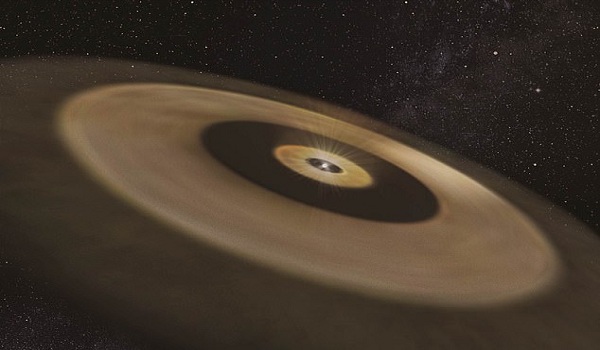Japanese astronomers discover 83 quasars created up to 13 BILLION years ago and two discs of space dust circling around a distant Sun-like star where new planets may be forming
Japanese astronomers have made two new discoveries using some of the most powerful telescopes in the world, according to Daily Mail.
The Subaru Telescope in Hawaii discovered 83 quasars powered by supermassive black holes (SMBHs) in the early universe.
Another team of experts used ALMA, located in Chile, and found sites where young planets may in two discs of space dust orbiting a young star similar to our Sun.
The objects spotted by Subaru are far older and further away from Earth than the discovery via ALMA.
It found quasars up to 13.05 billion light-years away, which dates back to the very dawn of the known universe.
Light from this body was emitted when the universe was only five per cent of its current age.
The survey found that the average spacing between supermassive black holes is a billion light-years.
‘The quasars we discovered will be an interesting subject for further follow-up observations with current and future facilities,’ said Dr Yoshiki Matsuoka of Ehime University, who headed up the research.
‘We will also learn about the formation and early evolution of SMBHs, by comparing the measured number density and luminosity distribution with predictions from theoretical models.’
The discovery of two hotbeds for developing worlds around a star 470 light years away came from astronomers at the National Astronomical Observatory of Japan.
The young star DM Tau was being analysed which is about half the mass of the Sun.
Analysis found it to be between three to five million years old and with two discs of dust.
Previous studies claimed it was just one ring around the star, but there was severe disagreement over how far away from the star at the centre it resided.
Some estimates claimed it was as far from the centre as the asteroid belt is in the solar system and the other estimate put it as far out as Neptune.
Research has found both are actually true, as there are two discs.
‘Previous observations inferred two different models for the disk around DM Tau,’ Tomoyuki Kudo, who led the research, explained.
‘Some studies suggested the radius of the ring is about where the Solar System’s asteroid belt would be.
‘Other observations put the size out where Neptune would be. Our ALMA observations provided a clear answer: both are right.
‘DM Tau has two rings, one at each location.’
N.H.Kh

